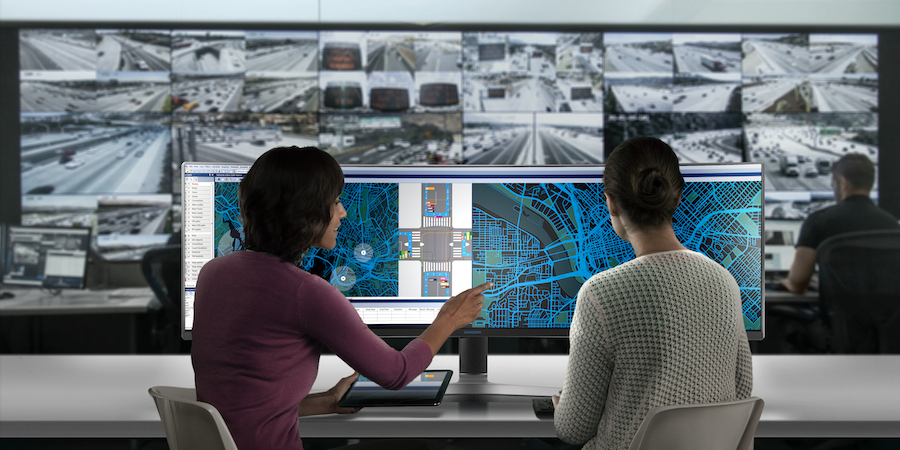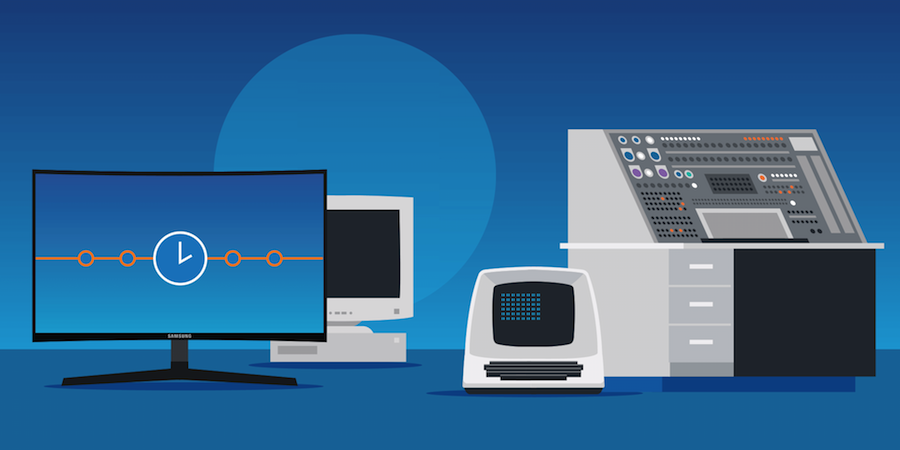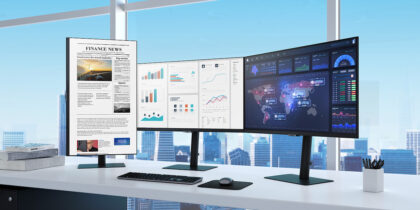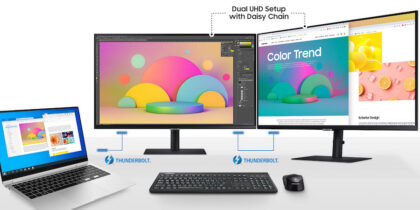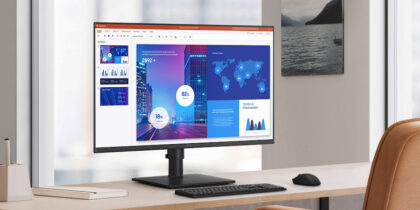There are many technical arguments for why creatives are adopting ultra high definition monitors at their workstations, but the simplest and most compelling reason is that more pixels mean more details, and more details produce better visuals.
A 4K display has dimensions of 3,840 pixels wide by 2,160 pixels tall, which is four times the pixel density of high definition, 1080p HD displays — display tech that already produces crisp visuals.
A typical 4K display is representing roughly the same pixel resolution — 8.5 megapixels — as a quality digital camera or higher-end smartphone camera.
Tried and True Technology
High pixel density may be an emerging technology for computer monitors, but there have actually been ultra-crisp visuals for a long time, with printed photography. The standard for high-quality printing of photos has long been 300 dots per inch (DPI), which packs a huge amount of visual information into a typical photo. Some photo printing uses even higher DPI rates.
It’s not just the analog world. In reality, many of us are already long accustomed to spending a lot of time in front of screens with even tighter pixel densities: our smartphones. The Samsung Galaxy S10, one of the most popular phones on the global market, has a density of 550 pixels per inch. So super-crisp, precise imaging is by no means a foreign concept. We just haven’t seen it much on larger footprint displays — but they’re now coming into the marketplace.
What Ultra High Definition Delivers
Pixel density is the key to super-realistic visuals. The more pixels packed into a screen, the crisper the image.
At lower resolutions, in close examination, the edges of a circle will have jagged steps — with each square pixel block evident in the way they help “make” that circle. As resolutions increase, those pixel blocks become smaller and the tiny steps start to vanish.
Explore the Evolution of Desktop Monitors
From blinking lights to quantum dots, discover the innovations that led to today's desktop monitors. Download Now
These 4K screens can also be remarkably vibrant, producing 100 percent of the available range of colors. Reproduction of colors — or color accuracy — is critically important to creatives and their brand-conscious clients. They don’t want just certain colors, they want exact, precision colors.
That’s possible with high-brightness-level monitors that can properly drive High Dynamic Range (HDR) technology, allowing viewers to see everything from all the nuances of the brightest scene, to all the elements in the darkest, moodiest scenes.
A 4K screen also delivers remarkable depth to visuals — with all that detail adding dimension to visuals. In lower resolutions, the visuals of a city skyline will look flat. With more pixels, viewers can see the buildings that are closer and those set further back.
Why It Matters
Research shows the higher the pixels, the more information is retained of the picture on display, making it easier for your brain to process the imagery. In other words, you’re using less brain power when watching a higher resolution display.
Our brains are essentially behaving in the same way as upscaling technology built in to most TVs and monitors. When we see visuals on a screen, our brains kick in to try to bring what we see on a screen to what we’re conditioned to seeing in the real world. Higher resolutions like 4K demand far less work by our brains.
Ultra high resolutions provide the detail, depth and color to see things that perhaps we’ve never really been able to before. For medical imaging, it means seeing fine blood vessels, nerves and, in some cases, anomalies that reveal early-stage diseases. That early detection can make a life-or-death difference.
That same level of detail enables geologists, physicists and engineers to view imaging and samples at super-high resolutions, removing much of the guesswork from what can be multimillion-dollar exploration projects.
By the Numbers
Creatives working on projects for marketers and for entertainment care about pixel density and color quality because great visuals influence consumers. Consider these stats:
- 90 percent of the information sent to our brains is visual
- 65 percent of us are visual learners
- 63 percent of consumers say good visuals are more important to them than product descriptions
- 67 percent of consumers say images are important to their purchasing decisions
Because visuals are so important, it’s logical that those images that show extraordinary clarity, depth and vibrancy are going to catch eyes and stir emotions. Luxury brands trade heavily on the emotions inspired by pristine visuals, whether it’s a fine timepiece, ring or a German sports coupe. When audiences see a tropical destination in visuals that feel lifelike, they want to get on a plane and go.
Mature Technology
When 4K came on to the market in much the same way several years ago, there were common concerns and objections, such as:
- Consumers won’t even see the difference from 1080p HD
- Production costs, from cameras to creative, were too high
- There was little to no native 4K content
- Available bandwidth and storage couldn’t handle 4K
It was all true, and it all changed. Screens with 4K technology are now commonplace and easily managed.
Now 8K is on the immediate horizon — already available as televisions and large format commercial displays. With time, 8K is also expected to become common in homes and workplaces.
That 8K resolution will again quadruple the number of pixels. But there’s no comprimise being made with 4K, which is already delivering an incredible wealth of visual details at workplace desktops.
Witness the evolution of desktop monitor technology and how 4K came to be in this infographic. Then take this quick assessment to get recommendations on which monitor is best for your office setup.
